Figured Walnut George II 18th Century Kneehole Desk Attributed to Elizabeth Bell
£7,600
Request Information
Follow Us
Figured Walnut George II 18th Century Kneehole Desk Attributed to Elizabeth Bell
A Fine George II Figured Walnut Kneehole Desk Attributed to Elizabeth Bell & Sons, 1740-1758.
The superb quarter veneered figured walnut top is bordered by a fine feather stringing, cross-banded and edged with cross-grain ovolo mouldings on re-entered corners.
Six oak lined drawers bearing their original locks and handles/escutcheons surround the central cupboard which opens on its original shaped H-hinges. The shaped frieze is book-matched in well-chosen veneers and opens as a hidden drawer.
The desk closely relates to a labelled example by Elizabeth Bell, illustrated in ‘Early Georgian Furniture 1715-1740’ by Adam Bowett, page 123, plate 3:56.
Elizabeth Bell succeeded her husband Henry in 1740 and her son Phillip succeeded her in or before 1758. They worked in the foremost region for fine furniture production in the late 17th and early 18th century, St Pauls Churchyard, London.
Condition
Good
Dimensions
Height: 32 in. (81.28 cm)
Width: 31 in. (78.74 cm)
Depth: 19 in. (48.26 cm)
PREVIOUSLY SOLD
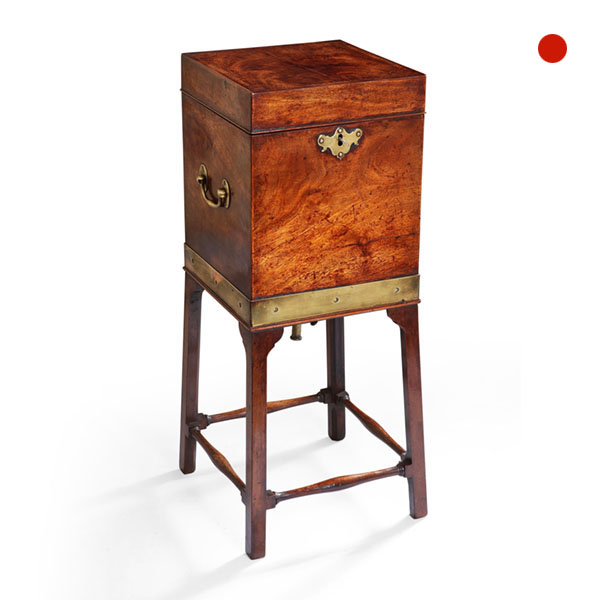
George III Mahogany Wine Cooler, Cellarette
Superb George III mahogany wine cooler or cellarette on stand. The cellarette is in fabulous original condition with a lovely rich patina. Lovely well-patinated flame of mahogany to the top, with a line rope inlayed stringing of holly and box. Original led lined interior divided into four sections.
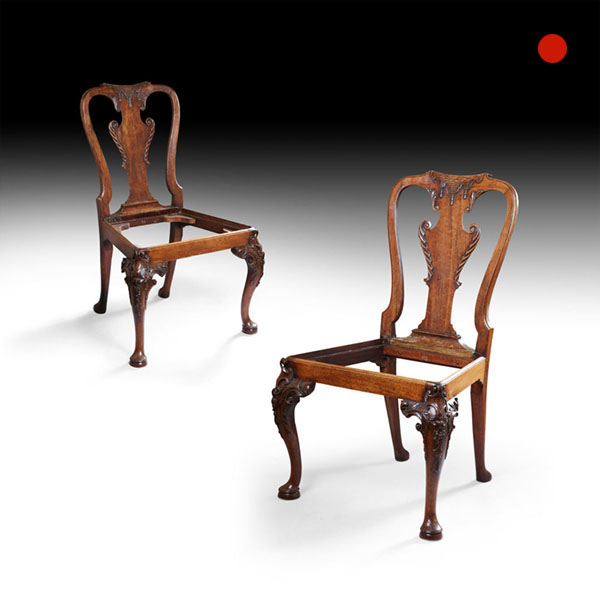
George I Carved Irish Walnut Pair of Chairs
A rare and fine pair of Irish George I walnut side chairs of excellent colour and patina, circa 1720. The undercut shaped back-splats of violin form are beautifully and naturally carved in acanthus leaves, returning into eared scrolls, topped by a crest rail depicting curtain swags and fine hanging passementerie.
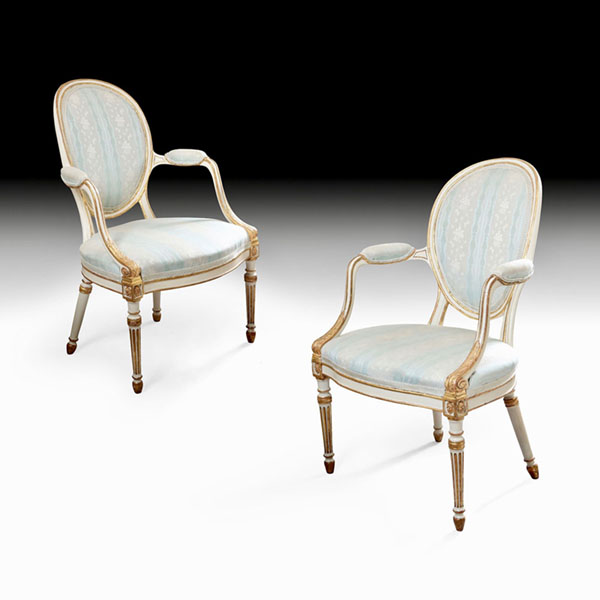
George III Parcel Gilt Painted Pair of Chairs
A fine pair of painted and carved George III English chairs in the French taste, upholstered in silk damask.
Possibly by John Linnell.
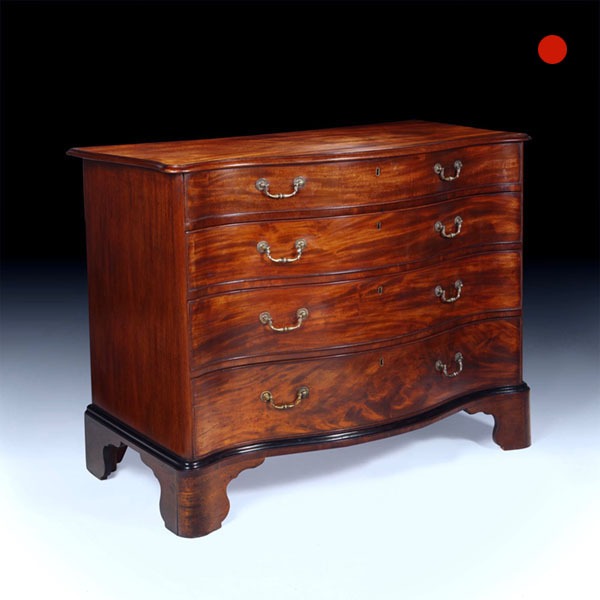
George III Mahogany Serpentine Chest of Drawers
Dating from one of the most famous and highly celebrated periods in English furniture history, now known as the ‘Chippendale period’.
This fine George III mahogany serpentine chest is very much in the manner of Thomas Chippendale.
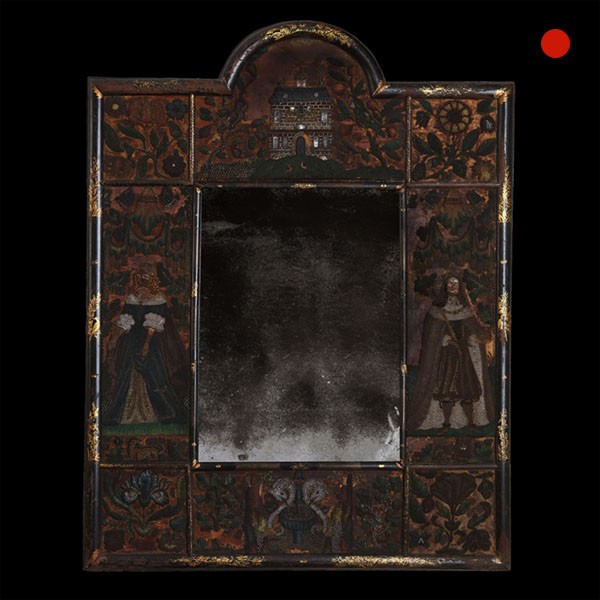
17th-Century Beadwork/Stumpwork Japanned Mirror
Advances in English domestic glass production in the second half of the century coincided with the fashion for stumpwork and resulted in the production of some of the most spectacular examples being produced.
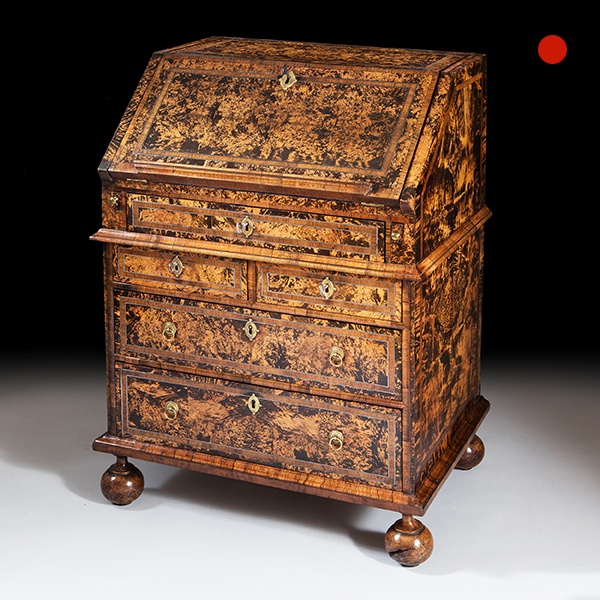
Queen Anne Mulberry Bureau Firmly Attributed to Coxed and Woster, circa 1710 England
Queen Anne Mulberry Bureau Firmly Attributed to Coxed and Woster circa 1710 England SOLD Follow UsQueen Anne Mulberry Bureau Firmly Attributed to Coxed and Woster, circa 1710 England This magnificent Queen Anne 'Mulberry Wood' (field maple) bureau of small proportion...

George III Mahogany Wine Cooler, Cellarette
Superb George III mahogany wine cooler or cellarette on stand. The cellarette is in fabulous original condition with a lovely rich patina. Lovely well-patinated flame of mahogany to the top, with a line rope inlayed stringing of holly and box. Original led lined interior divided into four sections.

George I Carved Irish Walnut Pair of Chairs
A rare and fine pair of Irish George I walnut side chairs of excellent colour and patina, circa 1720. The undercut shaped back-splats of violin form are beautifully and naturally carved in acanthus leaves, returning into eared scrolls, topped by a crest rail depicting curtain swags and fine hanging passementerie.

George III Parcel Gilt Painted Pair of Chairs
A fine pair of painted and carved George III English chairs in the French taste, upholstered in silk damask.
Possibly by John Linnell.

George III Mahogany Serpentine Chest of Drawers
Dating from one of the most famous and highly celebrated periods in English furniture history, now known as the ‘Chippendale period’.
This fine George III mahogany serpentine chest is very much in the manner of Thomas Chippendale.

17th-Century Beadwork/Stumpwork Japanned Mirror
Advances in English domestic glass production in the second half of the century coincided with the fashion for stumpwork and resulted in the production of some of the most spectacular examples being produced.

Queen Anne Mulberry Bureau Firmly Attributed to Coxed and Woster, circa 1710 England
Queen Anne Mulberry Bureau Firmly Attributed to Coxed and Woster circa 1710 England SOLD Follow UsQueen Anne Mulberry Bureau Firmly Attributed to Coxed and Woster, circa 1710 England This magnificent Queen Anne 'Mulberry Wood' (field maple) bureau of small proportion...
YOU MAY ALSO LIKE
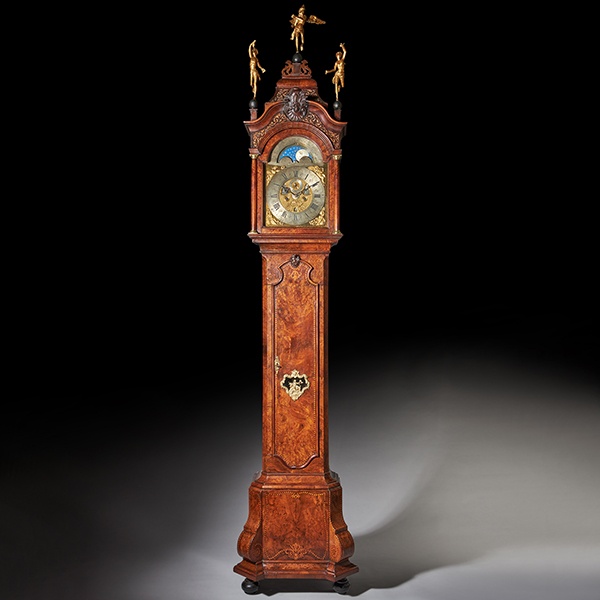
Magnificent 18th Century Striking Dutch Amsterdam Burl Walnut Longcase Clock
Magnificent 18th Century Striking Dutch Amsterdam Burl Walnut Longcase Clock £26,000Follow UsMagnificent 18th Century Striking Dutch Amsterdam Burl Walnut Longcase Clock An impressive Dutch longcase clock with a burr walnut veneered oak case,...

18th Century George III Mahogany Wine Cooler or Cellarette
18th Century George III Mahogany Wine Cooler or Cellarette £4,600Follow Us18th Century George III Mahogany Wine Cooler or Cellarette A fine and well-figured George III mahogany hexagonal wine cooler or cellarette on the original stand, C....

Striking 19th Century Carriage Clock with a Gilt-Brass Corniche Case by Grohé
Striking 19th Century Carriage Clock with a Gilt-Brass Corniche Case by Grohé £3,995 Follow UsStriking 19th Century Carriage Clock with a Gilt-Brass Corniche Case by Grohé Striking carriage clock with a gilt-brass corniche case by Grohé,...
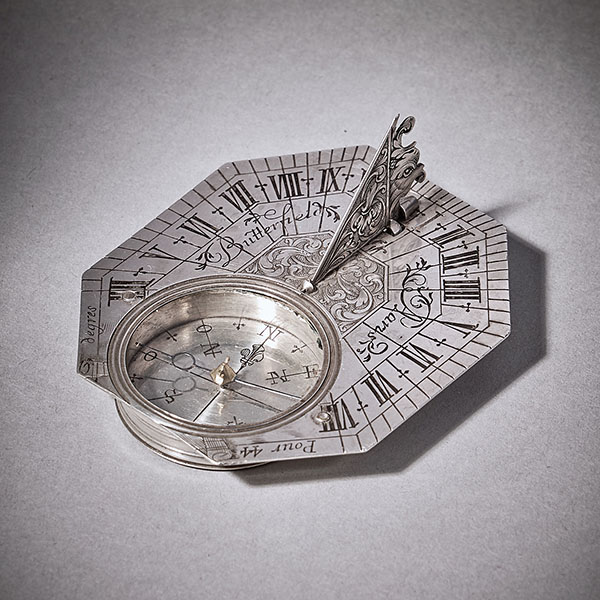
Rare Silver Pocket Sundial and Compass by Michael Butterfield, Paris, circa 1700
Rare Silver Pocket Sundial and Compass by Michael Butterfield, Paris, circa 1700 £4,900 Follow UsRare Silver Pocket Sundial and Compass by Michael Butterfield, Paris, circa 1700 A beautiful, rare solid silver Anglo-French octagonal pocket...

Engraved Eight-Day Striking and Repeating Carriage Clock by Perregaux Au Locle
Engraved Eight-Day Striking and Repeating Carriage Clock by Perregaux Au Locle Follow UsEngraved Eight-Day Striking and Repeating Carriage Clock by Perregaux Au Locle The superb engraved gilt gorge brass case has facetted glass panels to all...

Fine George III 18th Century Period Mahogany Longcase Clock by Tomas Fowle
18th Century Period Mahogany Longcase Clock by Tomas Fowle £12,995 Follow Us18th Century Period Mahogany Longcase Clock by Tomas Fowle A fine George III period mahogany longcase clock of excellent colour, patination and proportions, circa...

Magnificent 18th Century Striking Dutch Amsterdam Burl Walnut Longcase Clock
Magnificent 18th Century Striking Dutch Amsterdam Burl Walnut Longcase Clock £26,000Follow UsMagnificent 18th Century Striking Dutch Amsterdam Burl Walnut Longcase Clock An impressive Dutch longcase clock with a burr walnut veneered oak case,...

18th Century George III Mahogany Wine Cooler or Cellarette
18th Century George III Mahogany Wine Cooler or Cellarette £4,600Follow Us18th Century George III Mahogany Wine Cooler or Cellarette A fine and well-figured George III mahogany hexagonal wine cooler or cellarette on the original stand, C....

Striking 19th Century Carriage Clock with a Gilt-Brass Corniche Case by Grohé
Striking 19th Century Carriage Clock with a Gilt-Brass Corniche Case by Grohé £3,995 Follow UsStriking 19th Century Carriage Clock with a Gilt-Brass Corniche Case by Grohé Striking carriage clock with a gilt-brass corniche case by Grohé,...

Rare Silver Pocket Sundial and Compass by Michael Butterfield, Paris, circa 1700
Rare Silver Pocket Sundial and Compass by Michael Butterfield, Paris, circa 1700 £4,900 Follow UsRare Silver Pocket Sundial and Compass by Michael Butterfield, Paris, circa 1700 A beautiful, rare solid silver Anglo-French octagonal pocket...

Engraved Eight-Day Striking and Repeating Carriage Clock by Perregaux Au Locle
Engraved Eight-Day Striking and Repeating Carriage Clock by Perregaux Au Locle Follow UsEngraved Eight-Day Striking and Repeating Carriage Clock by Perregaux Au Locle The superb engraved gilt gorge brass case has facetted glass panels to all...

Fine George III 18th Century Period Mahogany Longcase Clock by Tomas Fowle
18th Century Period Mahogany Longcase Clock by Tomas Fowle £12,995 Follow Us18th Century Period Mahogany Longcase Clock by Tomas Fowle A fine George III period mahogany longcase clock of excellent colour, patination and proportions, circa...






